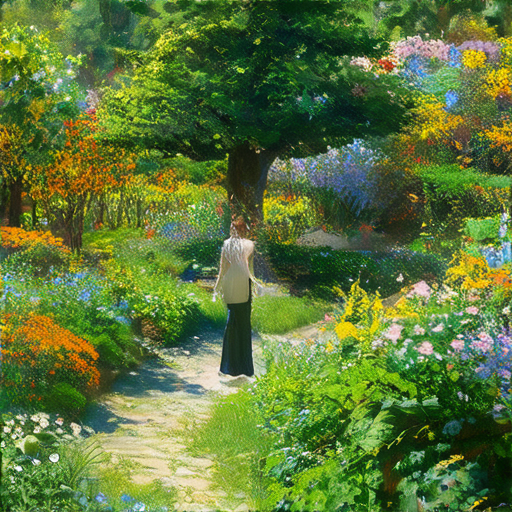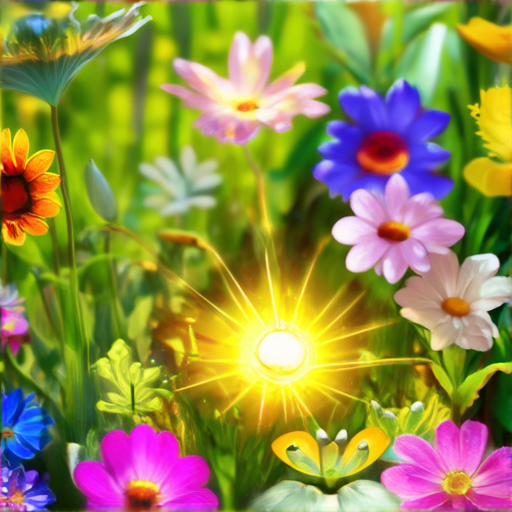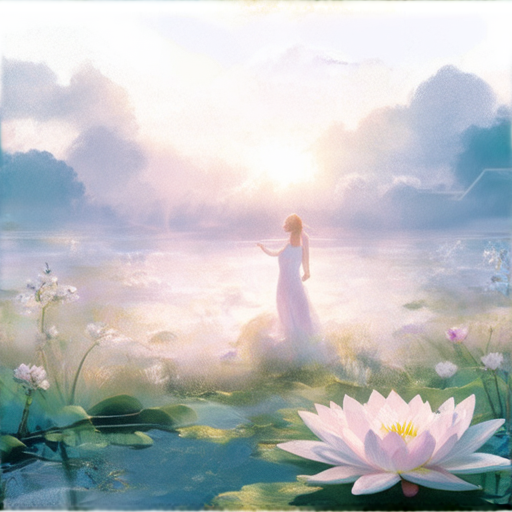As creatives continue to push boundaries and explore new forms of artistic expression, understanding the intricacies of inspiring artistic endeavors has become increasingly important. From painting and drawing to music composition and performance, various forms of artistic expression require a spark of creativity to bring ideas to life. However, finding and maintaining this spark can often prove challenging, leading many artists to seek out new sources of inspiration. In this article, we’ll delve into the world of artistic inspiration, exploring what it means, where it comes from, and how artists can harness its power to fuel their creative pursuits.

Exploring Creative Endeavors
As someone who values creativity and self-expression, I’m always excited to share my passion with others.
-
Writing
I’ve always been fascinated by the power of words to evoke emotions and spark imagination. Whether it’s fiction, non-fiction, or poetry, writing allows me to tap into my creative potential and express myself in unique ways.
-
Tips for Nurturing Creativity
To stay inspired and motivated, I make sure to set aside dedicated time for writing, experiment with different styles and genres, and seek out feedback from fellow writers and mentors.
-
-
Artistic Expression
From painting to photography, music to dance, I believe that art has the ability to transcend language barriers and connect us on a deeper level.
-
Exploring Different Mediums
I enjoy experimenting with various mediums, from traditional drawing and painting to digital art and mixed media. Each medium offers its own unique challenges and opportunities for growth.
-
-
Creative Community Building
I firmly believe that creativity thrives in a supportive environment, which is why I’m passionate about building and connecting with like-minded individuals who share my love for art and self-expression.
-
Fostering Inspiration and Collaboration
Through online platforms, workshops, and local meetups, I strive to create spaces where creatives can share ideas, learn from one another, and grow together.
-
Whether you’re a seasoned artist or just starting to explore your creative side, I invite you to join me on this journey of discovery and inspiration.
The Meaning of Artistic Inspiration
As an artist, I’ve often found myself wondering what sparks creativity and fuels my passion for making art.
- Definition: Artistic inspiration is an unconscious burst of creativity that drives me to express myself through various forms of art, whether it’s painting, music, writing, or any other medium.
- Origins: The concept of artistic inspiration dates back to ancient civilizations, with roots in both Hellenism and Hebraism.
- Characteristics: Inspiration can manifest in many ways, from a sudden epiphany to a gradual buildup of ideas and emotions.
- Role in Creativity: Inspiration plays a crucial role in the creative process, helping artists tap into their imagination and bring new ideas to life.
Types of Artistic Inspiration
- Nature: The beauty of nature has long been a source of inspiration for artists, from landscapes to still-life compositions.
- Personal Experiences: My own experiences, emotions, and memories often serve as fuel for my creative endeavors.
- Culture and History: Exploring different cultures and historical periods can spark new ideas and perspectives.
- Other Artists: Studying the work of fellow artists can inspire me to try new techniques and push boundaries.
Fostering Artistic Inspiration
To cultivate inspiration, I make sure to:
- Experiment: Try new mediums, techniques, and styles to keep my creative muscles engaged.
- Seek Out New Experiences: Travel, attend workshops, and engage with others to broaden my horizons.
- Maintain a Curious Mindset: Stay open to learning, exploring, and discovering new things.
- Practice Self-Care: Take care of my physical, emotional, and mental well-being to ensure I’m in a healthy state to create.
By embracing these principles, I aim to stay inspired and continue producing art that resonates with others.

5 Main Inspirations for Artists
I draw inspiration from various sources to fuel my creative journey.
-
Nature
The world around us is full of breathtaking landscapes, intricate patterns, and vibrant colors. Nature has been a timeless source of inspiration for artists, from the Impressionists to modern-day photographers. I find solace in the ever-changing seasons, the majesty of mountains, and the serenity of oceans.
-
Culture and History
Exploring different cultures and historical periods allows me to tap into the collective human experience. From ancient civilizations to contemporary art movements, I’m fascinated by the ways in which art reflects and shapes society. I draw inspiration from the works of iconic artists, architects, and designers who have left an indelible mark on our cultural heritage.
-
Personal Experiences and Emotions
My own life experiences, emotions, and relationships serve as a rich source of inspiration. I believe that art should be a reflection of the human condition, and I strive to capture the complexities and nuances of the human experience in my work. By tapping into my own emotions and vulnerabilities, I aim to create authentic and relatable pieces that resonate with others.
-
Technology and Innovation
The rapid pace of technological advancements has opened up new avenues for artistic expression. I’m intrigued by the possibilities offered by digital tools, virtual reality, and artificial intelligence. These innovations allow me to experiment with new forms, styles, and mediums, pushing the boundaries of what is possible in the art world.
-
Other Artists and Creatives
I find inspiration in the work of fellow artists, writers, musicians, and creatives who challenge conventional norms and push the envelope. Collaborating with others, attending exhibitions and performances, and engaging with online communities helps me stay connected to the global art scene and sparks new ideas and perspectives.

What is an Artist’s Inspiration Called?
An artist’s inspiration is commonly referred to as a muse.
- A muse can be a person, place, or thing that sparks creativity and inspires artistic expression.
- In ancient Greek mythology, muses were goddesses who embodied the arts and sciences, serving as inspirations for poets, musicians, and artists.
Types of Muses:
- Personification Muse: A person who embodies the qualities and characteristics that inspire an artist’s work.
- Place-Based Muse: A location or environment that sparks creativity and inspires artistic expression.
- Object-Based Muse: An object or artifact that serves as a source of inspiration for an artist’s work.
Examples of Muses:
- Famous artists who have credited muses for their inspiration include Pablo Picasso, Frida Kahlo, and Vincent van Gogh.
- Places like Paris, Rome, and New York City have long been considered muses for artists seeking inspiration.
- Objects like the Mona Lisa, Starry Night, and the Venus de Milo have served as muses for countless artists and art enthusiasts.
The Role of Muses in Artistic Expression:
Muses play a significant role in artistic expression, serving as catalysts for creativity and innovation.
- Muses can inspire artists to experiment with new techniques and mediums.
- Muses can spark ideas and themes that drive artistic expression.
- Muses can provide a sense of purpose and meaning behind an artist’s work.
Celebrating the Power of Muses:
Muses deserve recognition and celebration for their role in inspiring artistic expression.
- We can honor muses by acknowledging their impact on our lives and work.
- We can seek out new muses and experiences to fuel our creativity.
- We can share our own stories of how muses have inspired us, fostering a sense of community and connection among artists.
What is a Word for Passion for Art?
I’m often asked what drives my love for art, and I always respond with a simple yet profound term – Aesthete.
- Aesthete refers to an individual who has a deep appreciation and passion for art, beauty, and creative expression.
- This term encompasses not only visual arts but also music, literature, and other forms of creative expression.
The Importance of Embracing Your Inner Aesthete
As an artist myself, I believe that embracing our inner aesthete is essential for living a fulfilling life.
- By cultivating a sense of wonder and awe for the world around us, we open ourselves up to new experiences and perspectives.
- We become more empathetic and understanding towards others, recognizing the beauty in their unique stories and struggles.
- Our passion for art and creativity inspires us to take risks, push boundaries, and innovate in our own lives and work.
Nurturing Your Creative Spirit
To nurture your inner aesthete, I recommend exploring various forms of creative expression, such as painting, drawing, writing, or photography.
- Experiment with different mediums and techniques to discover what sparks joy and inspiration within you.
- Join a community of like-minded individuals who share your passions and interests.
- Take classes or workshops to learn new skills and gain confidence in your abilities.
Conclusion
In conclusion, being an aesthete is not just about admiring art; it’s about living a life filled with purpose, passion, and creativity.
By embracing our inner aesthete, we can cultivate a deeper appreciation for the world around us and inspire others to do the same.

What is an Artistic Muse?
An artistic muse is a person, place, or thing that inspires creativity and sparks imagination in artists, writers, musicians, and other creatives.
- A muse can be a real person, such as a loved one, a friend, or a family member, who provides emotional support and encouragement.
- A muse can also be a fictional character, such as a mythological figure or a literary icon, who embodies the qualities of creativity and inspiration.
- In addition, a muse can be a place, such as a studio, a garden, or a city, that provides a sense of calm and tranquility, allowing the artist to tap into their creative potential.
The Role of a Muse in Creative Process
A muse plays a crucial role in the creative process, serving as a catalyst for ideas and inspiration.
- A muse helps artists to overcome creative blocks and find new sources of inspiration.
- A muse provides emotional support and validation, helping artists to stay motivated and focused.
- A muse offers a fresh perspective and new ideas, challenging artists to think outside the box and push the boundaries of their work.
Types of Muses
There are many types of muses, each with its own unique characteristics and qualities.
- The Classic Muse: A traditional muse who embodies the qualities of creativity, inspiration, and beauty.
- The Modern Muse: A contemporary muse who represents the complexities and challenges of modern life.
- The Personal Muse: A individual who serves as a personal source of inspiration and motivation.
Finding Your Own Muse
Everyone has their own unique muse, whether it’s a person, place, or thing that inspires them.
To find your own muse, try the following:
- Reflect on your values and passions, and identify what drives you creatively.
- Explore different sources of inspiration, such as art, music, literature, and nature.
- Connect with others who share your interests and passions, and learn from their experiences.

0 Comments